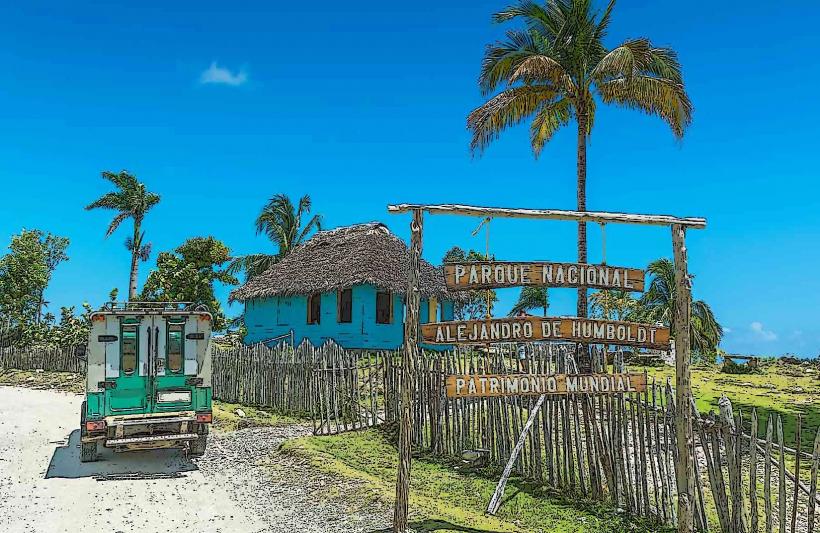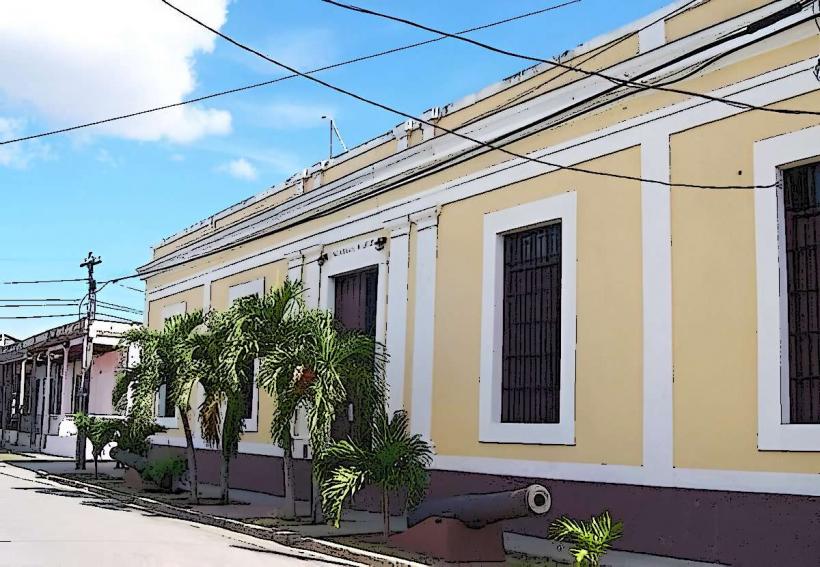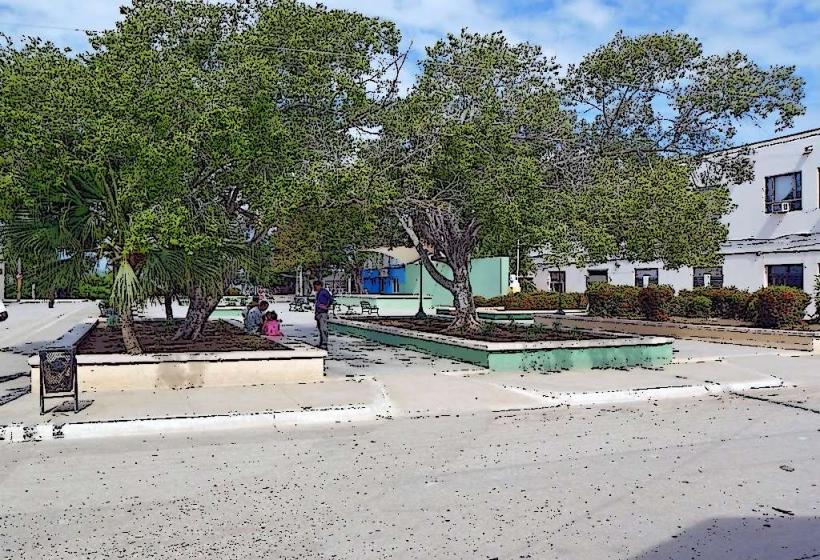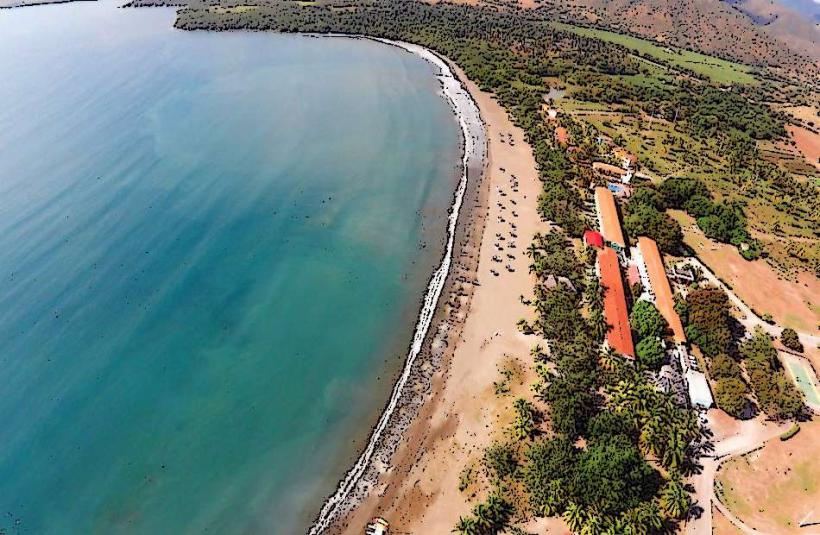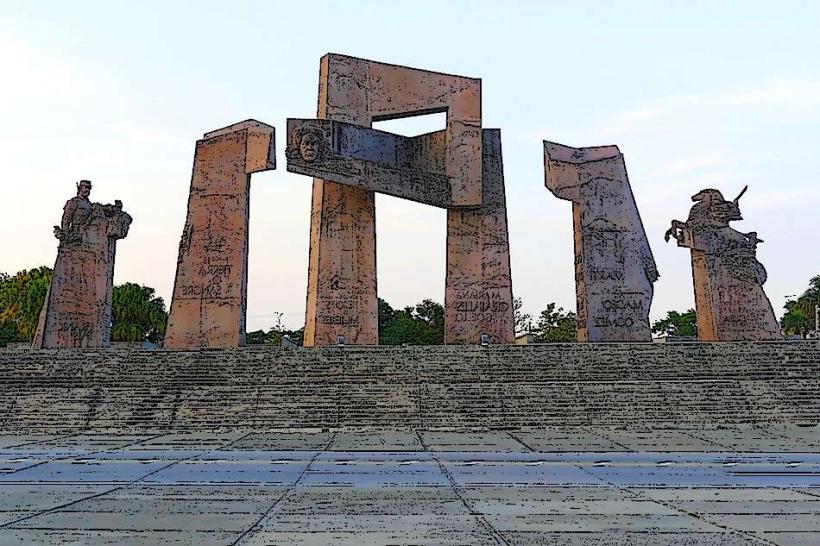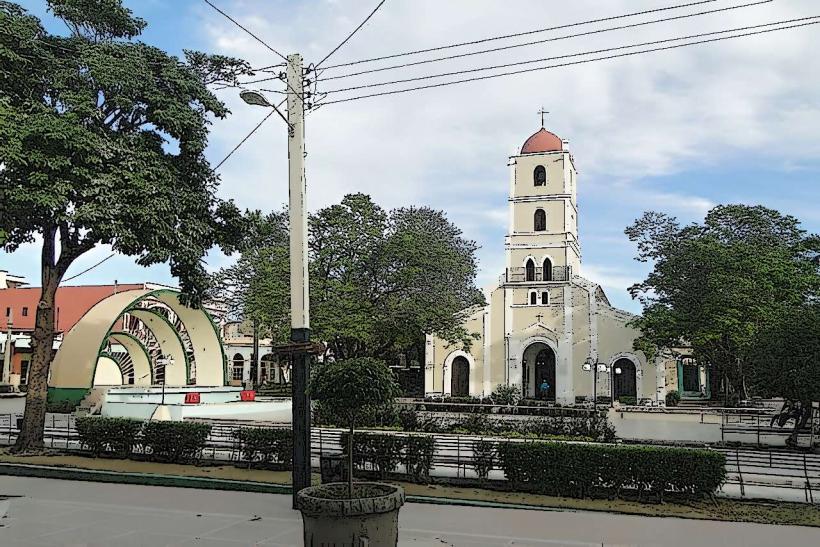Information
Landmark: Guantánamo Bay Naval BaseCity: Guantanamo
Country: Cuba
Continent: North America
The Guantánamo Bay Naval Base (often referred to as Gitmo) is a United States military facility located on the southeastern coast of Cuba, within the Guantánamo Province. The base is strategically important and has become a symbol of both geopolitical tensions and controversial practices. Here’s a detailed look at its history, significance, and the issues surrounding it:
Location and Geography:
- Geography: The base is situated on a 45-square-mile (116 km²) area of land that lies along the Caribbean Sea, surrounded by Cuban territory. It is located about 400 miles (640 km) from the U.S. mainland and about 800 miles (1,300 km) from the U.S. base in Florida.
- Access: Despite being on Cuban soil, the base is operated by the United States, and Cuba does not have sovereignty over the land. The base is located in the Guantánamo Bay, which is a natural harbor, providing a strategic position for the U.S. military.
History:
- Early History and Establishment: The United States first acquired the land in 1903 under the Platt Amendment, which was an agreement between the U.S. and Cuba after the Spanish-American War. The U.S. was granted the lease for the land in perpetuity, and the base was established as a coaling station for the U.S. Navy. The U.S. presence at Guantánamo Bay was solidified through the Cuban-American Treaty.
- Cuban Revolution and Tensions: Following the Cuban Revolution in 1959, led by Fidel Castro, Cuba sought to renegotiate the terms of the U.S. lease. However, the U.S. refused to relinquish control of the base. The Cuban government views the presence of the U.S. at Guantánamo Bay as illegal and a symbol of American imperialism on Cuban soil.
- Naval Base Expansion: Over the years, the U.S. military expanded the base, particularly during the Cold War. It became a key site for naval operations and logistics, as well as intelligence and surveillance activities, especially in the Caribbean region.
Strategic Importance:
- Military Function: The Guantánamo Bay Naval Base serves as a major U.S. military installation, used primarily for operations in the Caribbean and Latin America. The base is equipped with airfields, ports, and other infrastructure that make it a valuable asset for the U.S. military.
- Naval and Air Operations: The base plays a role in naval and air operations, training, and logistical support. It also serves as a location for maintaining ships and aircraft that are deployed in the Caribbean and Central America.
- Detention Facility: One of the most controversial aspects of Guantánamo Bay is its use as a detention center, particularly since the 2001 War on Terror. The base was used to house detainees captured during the wars in Afghanistan and Iraq, many of whom were suspected of being associated with al-Qaeda or the Taliban. The facility has been widely criticized for the indefinite detention of prisoners without trial and the use of enhanced interrogation techniques, including torture.
Legal and Diplomatic Issues:
- Lease Dispute: The Cuban government has consistently protested the continued U.S. presence at Guantánamo Bay. According to the Cuban government, the lease was signed under duress, and the U.S. presence is a violation of Cuban sovereignty. Cuba has demanded the return of the base, but the U.S. has refused to relinquish control.
- Diplomatic Tensions: The existence of the base has been a source of tension between the United States and Cuba for decades. It remains a symbol of the strained relations between the two countries, especially after the Cuban Revolution and the establishment of the Cuban Communist government. Despite efforts to normalize relations between the U.S. and Cuba, such as the Obama administration's initiatives in the 2010s, the base remains a contentious issue.
- International Criticism: The detention center at Guantánamo Bay has been a subject of significant international criticism, with numerous human rights organizations calling for its closure. The United Nations, the European Union, and other international bodies have condemned the use of the facility for indefinite detention without trial and its role in the U.S. counterterrorism efforts.
Detention Center:
- War on Terror: The U.S. began using Guantánamo Bay as a detention center for prisoners captured during the War on Terror following the September 11, 2001 attacks. The base became home to a controversial prison facility designed to house detainees from the Afghanistan and Iraq conflicts.
- Detainee Treatment: The detention center has been criticized for the conditions under which prisoners were held, including prolonged solitary confinement, denial of legal representation, and the use of torture during interrogations, such as waterboarding. The facility became synonymous with human rights abuses, with numerous detainees held without trial or charge for years.
- Legal Proceedings and Releases: Over time, the detainees' legal status and rights have been challenged in courts. Some detainees have been released, others transferred to third countries, and a few have been charged with terrorism-related offenses. However, many still remain at the base, and calls for the closure of the detention facility persist.
- Efforts to Close: In the early 2000s, there were efforts by the Obama administration to close the detention facility, but those efforts were thwarted by congressional opposition. The base continues to operate as a detention facility under the Trump and Biden administrations, though the number of detainees has decreased.
Modern-Day Use:
- Military Operations: Guantánamo Bay still plays an active role in U.S. military operations in the Caribbean and Latin America. The base is home to a significant military presence, including personnel from various branches of the military.
- Humanitarian Efforts: The U.S. has also used the base to provide humanitarian aid and conduct disaster relief operations in the Caribbean and Central America.
Conclusion:
The Guantánamo Bay Naval Base is a controversial and strategically important military installation with a complex history. It has served various roles, from a naval base to a detention facility, and its continued existence remains a flashpoint in U.S.-Cuba relations. The base’s status and its use as a detention center have generated significant legal, diplomatic, and human rights debates. The tensions surrounding the base highlight the broader complexities of U.S.-Cuban relations and continue to affect both countries’ foreign policies.

